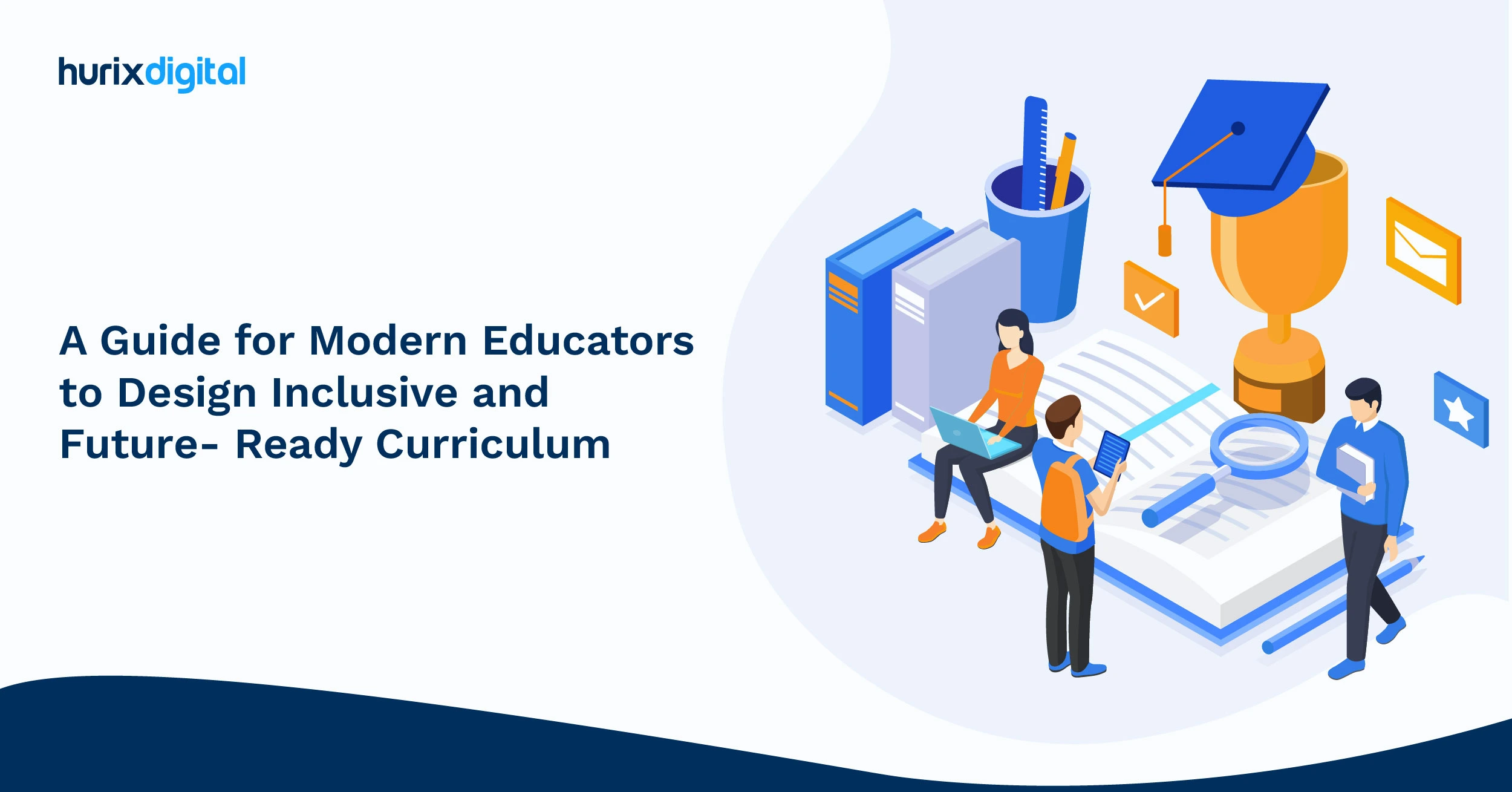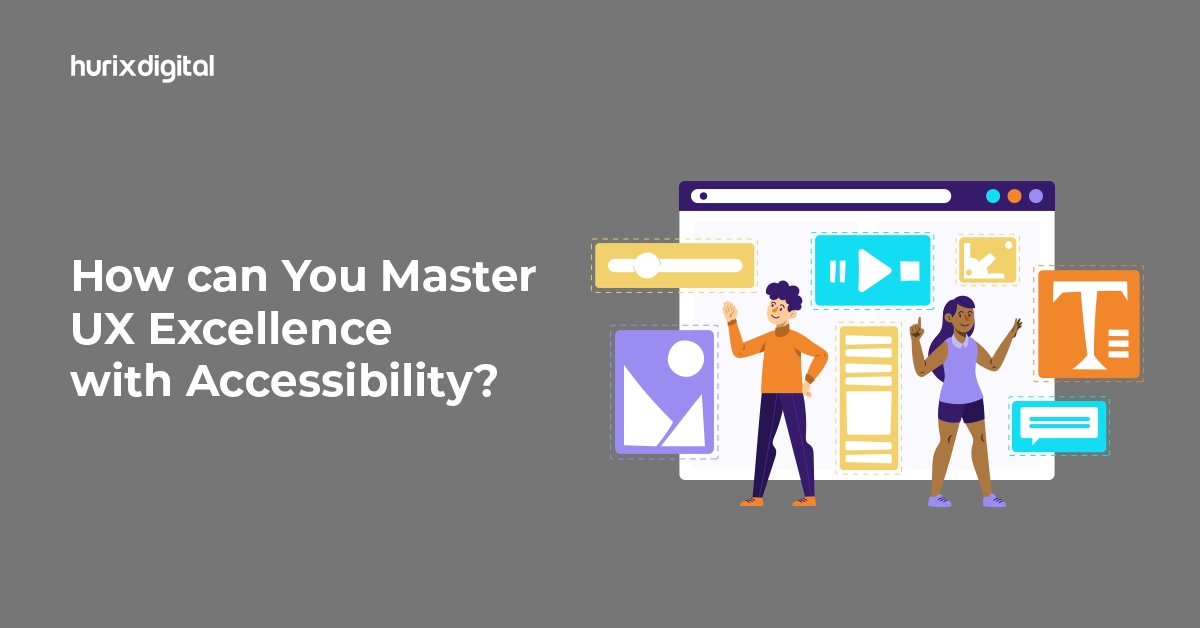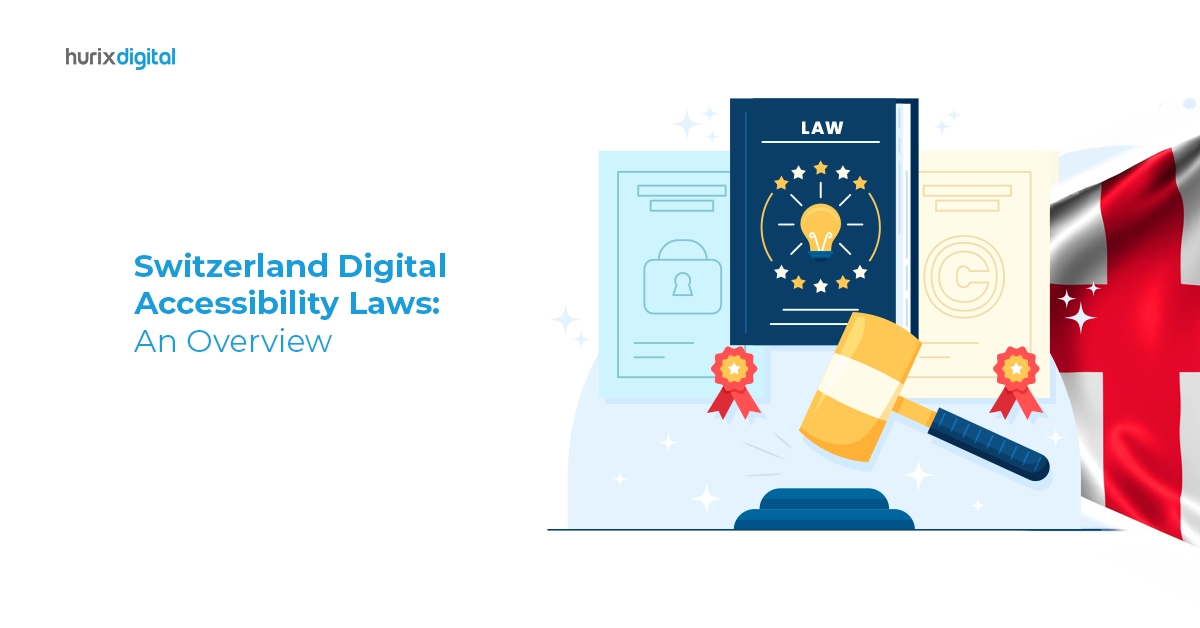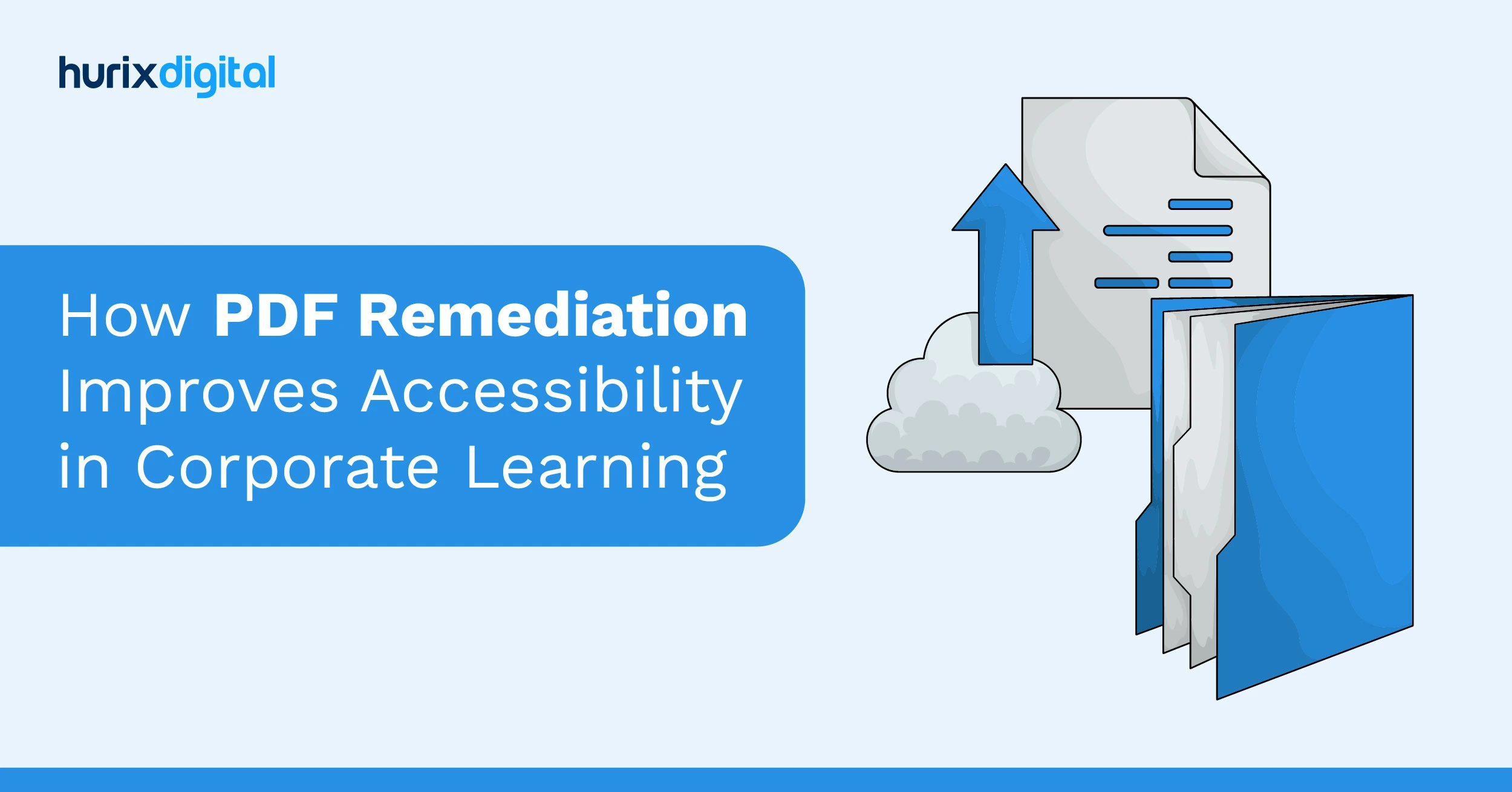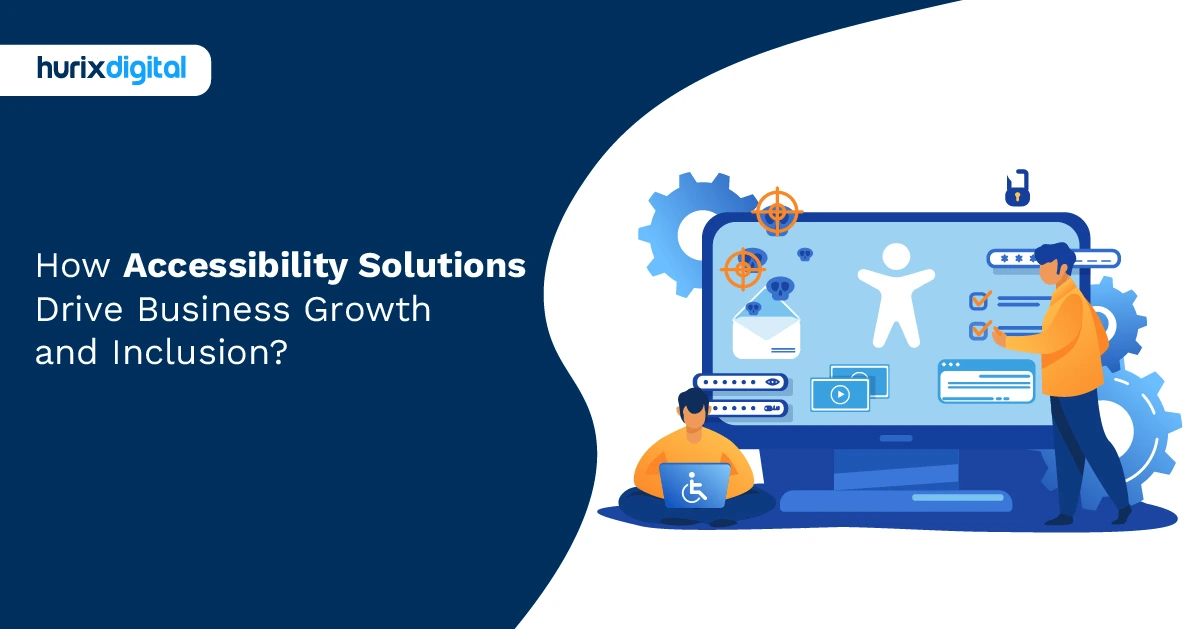
How Accessibility Solutions Drive Business Growth and Inclusion?
Summarize with:
Rita suffered a traumatic road accident that left her paralyzed from the waist down. After spending months in the hospital undergoing intense physiotherapy and treatment, she could finally return to her previous life. She resumed her job as a senior editor, which she is very passionate about and thoroughly enjoys.
However, now when she reaches her workplace, she has to wait 15-20 minutes every day at the door waiting for someone to let her in. Seated in a wheelchair, she finds it extremely difficult to reach the card reader at the gate. She tried talking to the IT office, asking them to allow digital tapping, but they haven’t done anything about it yet.
Do you think it’s fair that Rita has to waste 15 minutes every morning despite having informed the administration about her condition?
This is where accessibility matters and plays a very important role for people with disabilities. Nearly 1.3 billion people worldwide experience some kind of disability. Additionally, by 2050, the total number of disabled people is expected to double. Therefore, accessibility in the workplace needs to be an essential component in every organization.
Table of Contents:
- What is Web Accessibility?
- Why is Workplace Accessibility Important?
- How to Ensure Physical Accessibility at the Workplace?
- How to Ensure Digital Accessibility at the Workplace?
- 10 Ways Accessibility Solutions Can Improve Your Business and Increase Revenue
- Pick a CMS That is Made to Support Accessibility
- Put Effort into Organizing Headers
- Write Descriptive Titles for Every Link
- Use the Right Colors
- Create Forms That Support Web Accessibility
- Use Tabular Data for Tables
- Aim to Turn Dynamic Content into Accessible Content
- Ensure that the Website is Easily Navigable with Just the Keyboard
- Use Alt Tags for Photos
- Improve Your SEO
- Closing Thoughts
What is Web Accessibility?
Web accessibility solutions ensure that your digital properties and website can be easily accessed by people with disabilities, including those with temporary, permanent, situational, or conditional barriers. Its value is such that it can promote brand awareness and ensure customer loyalty.
Plus, it can help you differentiate your business from your competitors in multiple ways.
Not only do users with physical barriers benefit, but there are also additional non-disability benefits. Less mobility due to aging, environmental limitations such as poor internet connection/bandwidth, input modes for gadgets with small screens, and short-term disabilities like misplaced specs or broken bones.
Additionally, it plays a major role in keeping litigation at bay.
Why is Workplace Accessibility Important?
Workplace accessibility is significant because it ensures that people with disabilities have equal opportunities to participate in the workplace and contribute their skills and capacities to their workplaces.
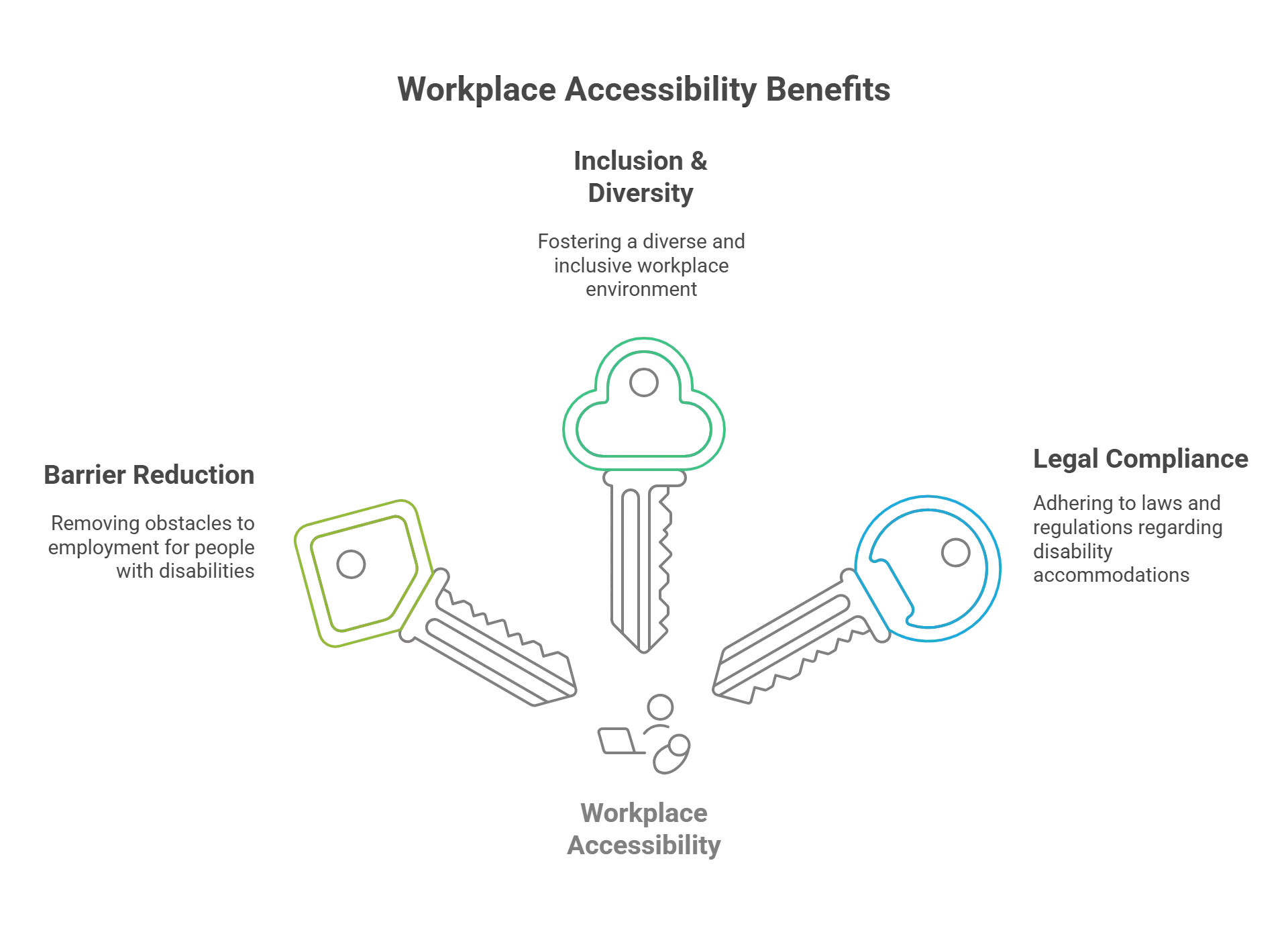
Mentioned here are some reasons why accessibility should be the number one priority for each workplace.
1. Reduces the Barrier to Employment
Often, people with disabilities find it difficult to get jobs or succeed in the workplace.
By ensuring accessibility and removing physical and digital accessibility barriers, employers can tap into a wider pool of talent and help individuals with disabilities achieve greater economic independence.
2. Promotes Inclusion and Diversity
By creating an accessible workplace, employers can attract and retain a diverse range of employees, including people with disabilities. This can bring new viewpoints and ideas to the workplace and upgrade overall performance.
3. Compliance with Legal Requirements
Many countries have laws and regulations that require employers to provide reasonable accommodations for employees with disabilities. Failure to fulfill these requirements can result in legal penalties and damage to an employer’s reputation.
However, legal requirements should not be the driving force behind employers’ ensuring workplace accessibility. The objective should be to provide an inclusive workplace for people with disabilities so that they can fully participate in society.
How to Ensure Physical Accessibility at the Workplace?
Creating a physically accessible workplace involves taking a wide range of steps to ensure that the physical environment is designed to accommodate people with disabilities.
Here are some steps that can be followed to create a physically accessible workplace:
- Conduct an accessibility audit to identify all potential barriers, such as limiting entrances/exits, inaccessible restrooms, uncomfortable workstations, etc.
- Provide accessible parking by ensuring the parking space is near the entrance/exit. A clear sign should be made at the place reserved for disabled people.
- Create comfortable and accessible workstations with adjustable desk height, ergonomic chairs, etc.
- Ensure accessibility in common rooms like meeting rooms, break rooms, leisure rooms, cafeteria, etc.
- Install assistive devices like ramps, elevators, and automatic doors.
- Include accessibility in corporate training to teach other employees about it, including teaching them how to interact with people with disabilities.
How to Ensure Digital Accessibility at the Workplace?
Creating a digitally accessible workplace involves taking various steps to ensure that digital products, services, and content are designed to accommodate people with disabilities.
Here are some steps that can be followed to create a digitally accessible workplace:
- Use accessible design principles while creating digital content, such as appropriate color contrast, clear and concise language, and easy-to-navigate navigation.
- Use technology that is accessible to people with disabilities, such as screen readers and other assistive technologies.
- Follow the WCAG website compliance guidance and conduct regular website accessibility testing.
- Provide alternative text descriptions for non-text content like images and videos.
- Ensure that digital content can be navigated using a keyboard so employees who face problems using a mouse can still access the information.
- Use accessible document formats, such as PDFs with text-based information.
10 Ways Accessibility Solutions Can Improve Your Business and Increase Revenue
Needless to say, websites that are optimized with accessibility solutions make browsing a smooth experience for everyone.
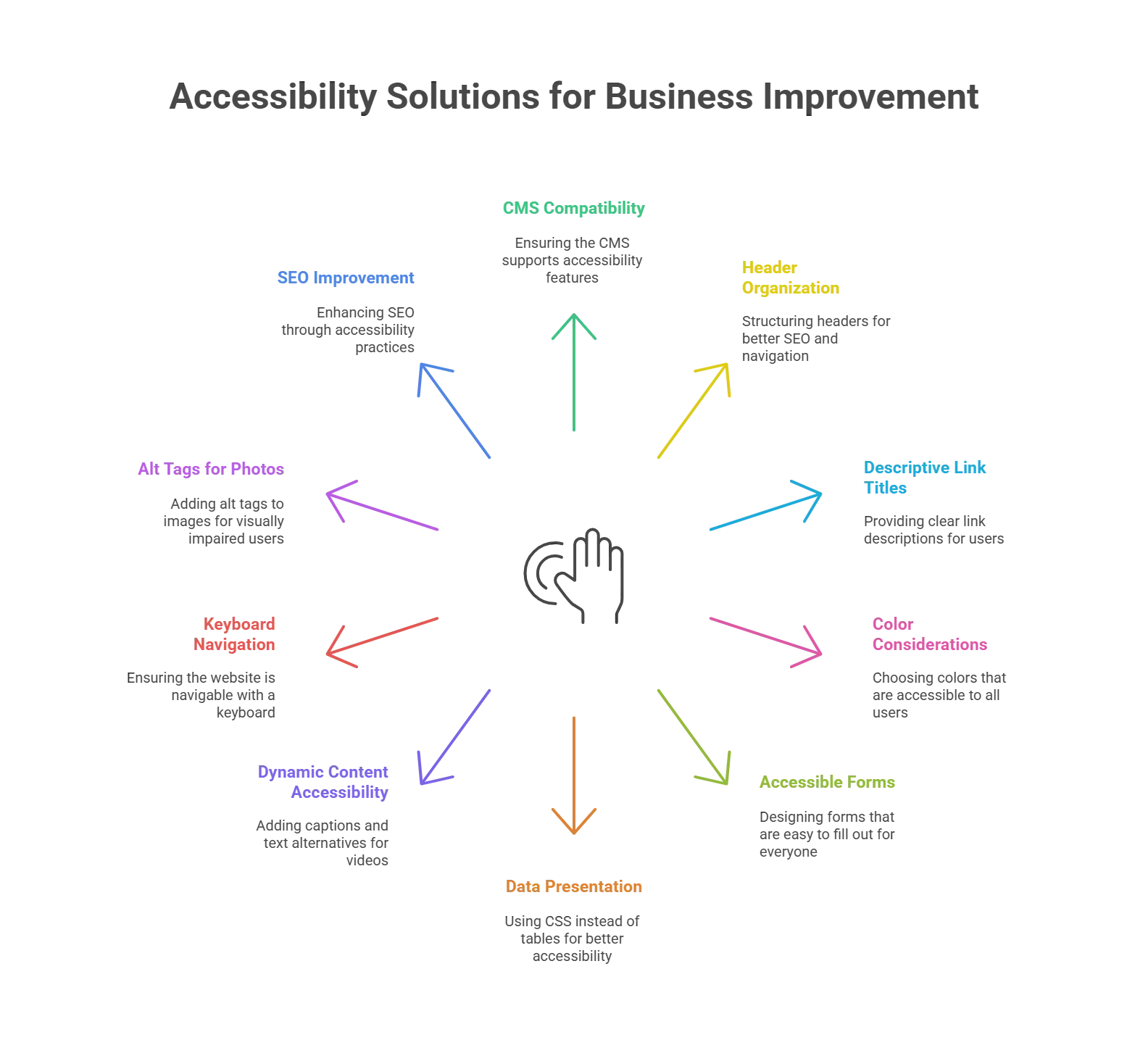
Here are 10 ways to improve your business with accessibility solutions:
1. Pick a CMS That is Made to Support Accessibility
The first thing to plan while building a website is choosing the CMS (content management system) wisely. Since your goal is to make the website accessible, it’s crucial that you ensure that the CMS you are using fully supports your plan.
Keep in mind that your website’s layout, theme, plugins, widgets, and other elements should be compatible to provide access to all kinds of visitors.
2. Put Effort into Organizing Headers
If used correctly, headers play a key role in building a website. Knowing how to structure headers is crucial when making your website accessible.
Keeping all the headers to the point will improve your SEO score and generate more traffic to your website than usual.
3. Write Descriptive Titles for Every Link
Write descriptive titles to help your website visitors understand the purpose of each link before they click on it.
Most visitors who have severe sight disabilities use screen-reading software, and descriptive titles will help them figure out the content on your website.
4. Use the Right Colors
Colors play a very important role in setting the vibe of your website, so make sure to do your research before you finalize decisions about it.
For example, people with color blindness see certain colors differently, and using such colors on your website may give them the wrong impression of certain things.
Make sure to color-code CTAs and other important buttons on the website using colors that are easy on the eyes of visually impaired visitors.
5. Create Forms That Support Web Accessibility
When you design forms for your website, you must use proper labels for all the fields through the use of descriptive titles. This allows the audience that uses screen readers to fill in the forms on the website with more accuracy.
6. Use Tabular Data for Tables
Tables make building a page’s layout more convenient, and normal visitors find it easy to obtain information from them. However, information on tables is quite difficult to attain for specially abled visitors.
To sort out this issue, experts recommend using CSS presentation to structure web page layouts instead of tables.
7. Aim to Turn Dynamic Content into Accessible Content
Embedding video content and related GIFs on your website is great for your SEO score and a lasting impression, but to make them more accessible, make sure to include text alternatives and captions.
This will ensure that the user experience of your website is equal for all visitors and will leave a lasting impression.
8. Ensure that the Website is Easily Navigable with Just the Keyboard
A huge part of web accessibility is making sure that your website provides visitors with a barrier-free navigation experience.
Simple and easy-to-navigate websites are loved by all, and by making your website navigable with just the arrow keys, you increase your website’s inclusivity. The website should also be optimized for alternative hardware, like a mouth stick.
9. Use Alt Tags for Photos
Photos are important for all kinds of websites to keep visitors engaged for a longer period of time. However, visually impaired visitors are likely to face issues in this case.
To ensure that both abled and specially-abled visitors make the most of their time on your website, make sure to assign alt tags to all the photos you use. This action also helps boost your SEO score, so the benefits are numerous.
10. Improve Your SEO
Utilization of accessibility solutions will not work overnight if you don’t work on your SEO. Making brand content semantic is just as crucial for machines as it is for humans.
Keep in mind that bots of a search engine consume content in pretty much the same way as people with disabilities. So, experts highly recommend improving your SEO score because that’s what helps Google index your brand content properly.
Closing Thoughts
If all workplaces consider the above points, employees will have no difficulties doing their jobs. By ensuring physical and digital accessibility, employers can reach a wider audience, promote a culture of inclusion and accessibility, and create a more welcoming and inclusive workplace.
If you are looking for accessibility companies or website accessibility vendors, contact us at Hurix Digital. We excel in all accessibility solutions, and some of our most trusted customers are Ikea, Cambridge University Press, FedEx Express, Deloitte, etc.
Reach out to our expert team to get started.
Summarize with:

Vice President – Content Transformation at HurixDigital, based in Chennai. With nearly 20 years in digital content, he leads large-scale transformation and accessibility initiatives. A frequent presenter (e.g., London Book Fair 2025), Gokulnath drives AI-powered publishing solutions and inclusive content strategies for global clients
 Upcoming Masterclass | Build an Army of Brand Evangelists using Training & Development | November 20th, 8:30 AM PDT | 11:30 AM EDT | 10:00 PM IST
Upcoming Masterclass | Build an Army of Brand Evangelists using Training & Development | November 20th, 8:30 AM PDT | 11:30 AM EDT | 10:00 PM IST

